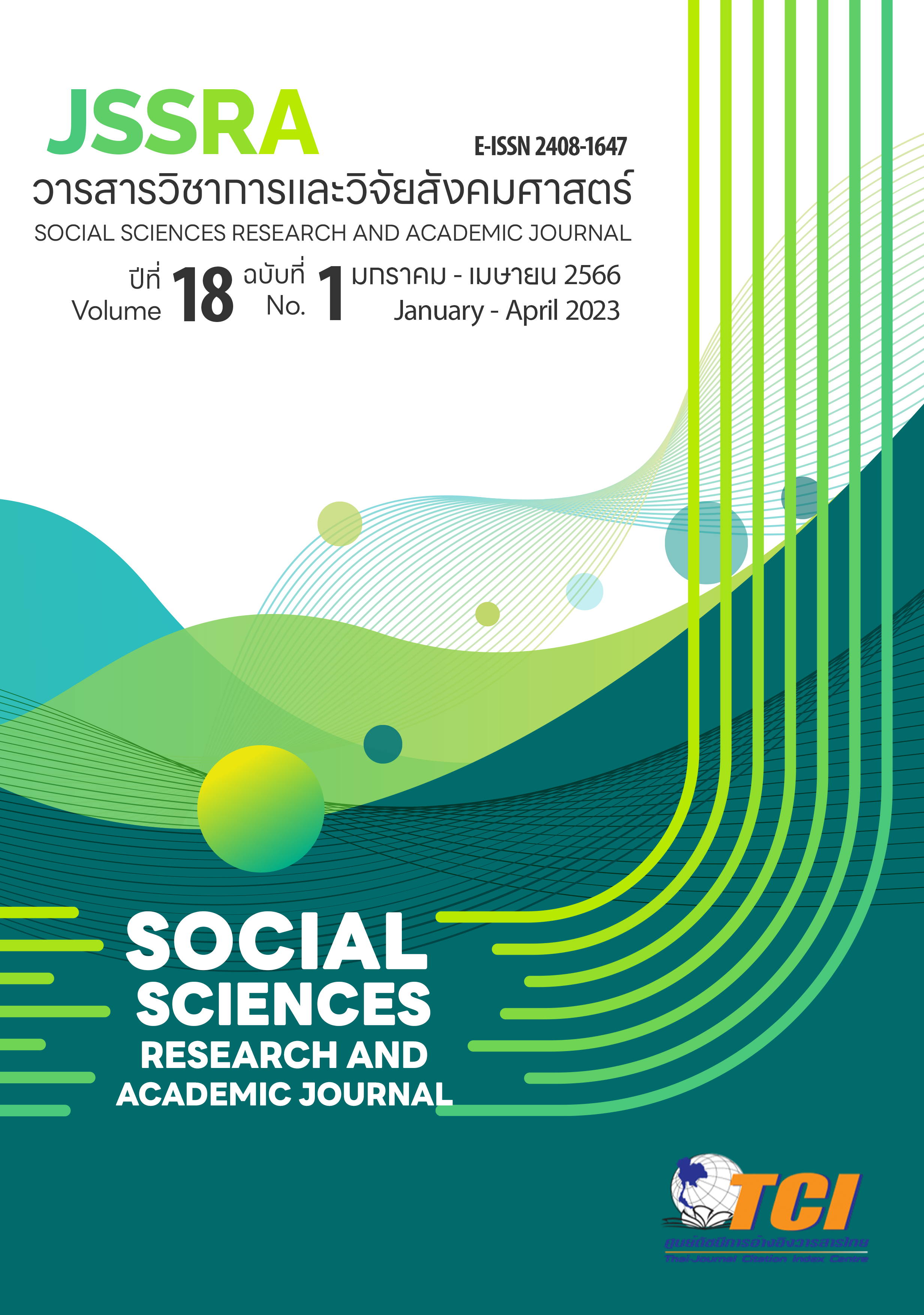A Study of Critical Thinking Processes of Upper Secondary School Students Using Thinking Aloud Technique A Study of Critical Thinking Processes of Upper Secondary School Students Using Thinking Aloud Technique
Main Article Content
Abstract
This study aims to examine the levels and processes of critical thinking among students in upper secondary schools using Thinking Aloud technique. By means of Purposeful Sampling, thirteen Grade 12 students in a science-mathematics stream from a Bangkok school were selected as participants. The researcher created a Critical Thinking Test based on Ennis and Millman's Cornell Critical Thinking Test Level X using scenarios involving fossil fuels, and data were collected using the Thinking Aloud technique. Data were analyzed using percentage, , S.D. and content analysis.
The results showed that only one student (7.69) was at a high level, Students who had a high level of critical thinking had a critical thinking process that reflects all components. The evidence was evaluated based on the data reliability obtained from observations, facts, conclusions drawn from the situation, and a preliminary agreement text consistent with the example situation. And 12 students (92.31 percent) were at a medium level. In addition, the majority of students with a moderate level of critical thinking were able to demonstrate credibility and observation, but they were unable to demonstrate other components as they should due to misunderstandings based solely on guesswork and without consideration of data or evidence.
Article Details
References
กระทรวงศึกษาธิการ. (2561). ประกาศกระทรวงศึกษาธิการ เรื่อง ให้ใช้มาตรฐานการศึกษา ระดับปฐมวัย ระดับการศึกษาขั้นพื้นฐาน และระดับการศึกษาขั้นพื้นฐานศูนย์การศึกษาพิเศษ. สืบค้นวันที่ 14 มกราคม 2564 จาก http://www.ratchakitcha.soc.go.th/DATA/PDF/2561/E/235/T_0004.PDF
กรกนก เลิศเดชาภัทร. (2565). การประเมินทักษะการคิดอย่างมีวิจารณญาณของนักเรียนมัธยมศึกษาตอนต้น. วารสารศึกษาศาสตร์ มหาวิทยาลัยนเรศวร, 24(1), 56-65.
กาญจนา สิริสิทธิมหาชน. (2561). การสอนให้คิดอย่างมีวิจารณญาณในกระบวนการเรียนรู้ในศตวรรษที่ 21 สู่การประเมินเพื่อพัฒนา. วารสารวิชาการ มหาวิทยาลัยหอการค้าไทย, 38(3), 106-119.
ณัฐพร ฐิติมโนวงศ์. (2562). การจัดการเรียนรู้ด้วยนวัตกรรมห้องเรียนกลับด้านเพื่อส่งเสริมการคิดอย่างมีวิจารณญาณ เรื่อง ดิน หิน แร่ และธรณีกาลของนักเรียนชั้นมัธยมศึกษาปีที่ 6 โรงเรียนวิทยาศาสตร์จุฬาภรณราชวิทยาลัยบุรีรัมย์. วารสารวิจัยและพัฒนา มหาวิทยาลัยราชภัฏบุรีรัมย์, 14(1), 91-99.
ณัทกวี ศิริรัตน์. (2552). ผลการจัดการเรียนการสอนแบบทีมในรายวิชาการพยาบาลบุคคลที่มี ปัญหาสุขภาพ 1 ต่อผลสัมฤทธิ์ทางการเรียนและความคิดอย่างมีวิจารณญาณของ นักศึกษาหลักสูตรพยาบาลศาสตรบัณฑิต. วารสารวิจัยทางวิทยาศาสตร์สุขภาพ, 3(2), 32-40.
ดำรงศักดิ์ สุดเสน่ห์. (2561). กระบวนการสร้างเสริมศักยภาพการคิดอย่างมีวิจารณญาณของผู้เรียนในศตวรรษที่ 21 ตามธรรมชาติวิชาวิทยาศาสตร์. กรุงเทพฯ: สำนักงานคณะกรรมการการศึกษาขั้นพื้นฐานกระทรวงศึกษาธิการ.
ทิศนา แขมมณี, และคณะ. (2544). วิทยาการด้านการคิด. กรุงเทพฯ: เดอะมาสเตอร์กรุ๊ป แมเนจเม้นท์.
ธนพร แย้มสุดา, และคณะ. (2553). วิเคราะห์การคิดอย่างมีวิจารณญาณของนักเรียนในสถานศึกษากองทัพเรือ. วารสารพยาบาลทหารบก, 11(2), 1-97.
ปณิธาน มั่นคง. (2561). การคิดอย่างมีวิจารณญาณในวิชาวิทยาศาสตร์ของนักเรียนชั้นมัธยมศึกษาปีที่ 2 ที่ได้รับการเรียนโดยใช้แผนผังเชิงโต้แย้ง. วารสารศึกษาศาสตร์ มหาวิทยาลัยนเรศวร, 20(4), 129-143.
พัชราพร จามรี. (2564). ความสามารถในการคิดอย่างมีวิจารณญาณเรื่องปัญหาสิ่งแวดล้อมของนักเรียนชั้นมัธยมศึกษาปีที่ 6. วารสารศึกษาศาสตร์สาร มหาวิทยาลัยเชียงใหม่, 5(1), 28-43.
เพ็ญพิศุทธิ์ เนคมานุรักษ์. (2537). การพัฒนารูปแบบพัฒนาการคิดอย่างมีวิจารณญาณสำหรับนักศึกษาครู. จุฬาลงกรณ์มหาวิทยาลัย: กรุงเทพฯ.
มนัสสิริ อินทร์สวาท. (2560). การเปรียบเทียบคุณภาพของแบบสอบวินิจฉัยแบบสามระดับสำหรับมโนทัศน์ที่คลาดเคลื่อนทางคณิตศาสตร์ที่ใช้ระดับความมั่นใจที่แตกต่างกัน. วารสารอิเล็กทรอนิกส์ทางการศึกษา, 12(3), 409-424.
ยุพาพรรณ จันทร์ศรี. (2561). การเปรียบเทียบความสามารถด้านการอ่านภาษาไทยเพื่อความเข้าใจของนักเรียนชั้นมัธยมศึกษาปีที่ 1 โดยการจัดการเรียนรู้ด้วยเทคนิคการอ่านแบบ Think aloud กับการอ่านแบบปกติ. การวัดผลการศึกษามหาวิทยาลัยมหาสารคาม, 19(1), 116-124.
วัชรพล จันทรวงศ์. (2562). ความสามารถและกระบวนการคิดอย่างมีวิจารณญาณในเนื้อหาฟิสิกส์ เรื่องการเคลื่อนที่แนวตรง ของนักเรียนชั้นมัธยมศึกษาปีที่ 4. วารสารวิชาการและวิจัยสังคมศาสตร์, 14(3), 15-30.
วิเชียร ภคพามงคลชัย. (2561). การพัฒนาทักษะการคิดอย่างมีวิจารณญาณด้วยการจัดการเรียนรู้โดยใช้การวิจัยเป็นฐาน ของนักเรียนชั้นมัธยมศึกษาปีที่ 5. วารสารศิลปากรศึกษาศาสตร์วิจัย, 10(2), 241-254.
สุภางค์ จันทวานิช. (2547). การวิจัยเชิงคุณภาพ. กรุงเทพฯ: สำนักพิมพ์แห่งจุฬาลงกรณ์มหาวิทยาลัย.
อภิชาต พยัคฆิน. (2557). การพัฒนาทักษะการคิดอย่างมีวิจารณญาณด้วยรูปแบบ2(PCA) ในหน่วยการเรียนรู้สหวิทยาการเรื่องการเปลี่ยนแปลงสภาพภูมิอากาศ สำหรับนักเรียนมัธยมศึกษาตอนต้น. วารสารวิชาการและวิจัยสังคมศาสตร์, 9(27), 77-90.
Dewey, J. (1993). How to Think. Boston D.C.: health Company.
Ennis, R. H. (1985). A Concept of Critical thinking: A Propose for Research in Teaching and Education: Rand Manually and company. America.
Ennis, R. H., & Millman, J. (1985). Manual: Cornell Critical Thinking Test Pacific Grove: CA: Midwest.
Good, C. V. (1973). Dictionary of Education. New York: Mc Graw - Hil Book Company.
Halpern, D. F. (2003). Thought and knowledge: An introduction to critical thinking (4th ed.). Mahwah, NJ: Lawrence Erlbaum Associates.
Oh, S., & Wildemuth, B. M. (2009). Think-aloud Protocols. In B.M.Wildemuth (Ed.), Applications of Social Research Methods to Questions in Information and Library Science (pp.178-188). Westport, CT: Libraries Unlimited.
Saleh, S. E. (2019). Critical Thinking as a 21-Century Skill: Conceptions, Implementation and Challenges in the EFL Classroom. European Journal of Foreign Language Teaching, 4(1), 1-16.
Wason, G., & Glaser. (1964). Watson - Glaser Critical Thinking Apprciso Manual. New York: Harcourt Brace and Word.


